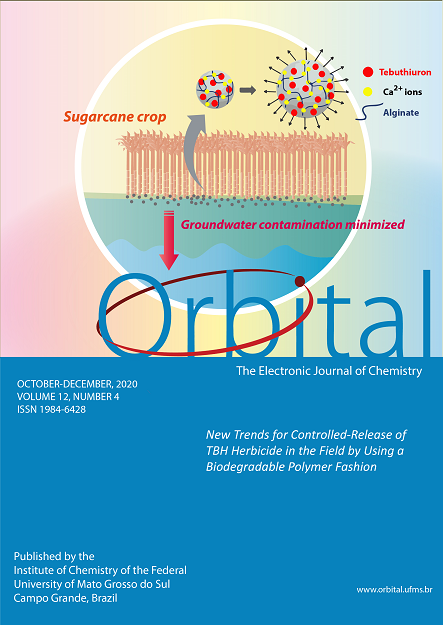3D-QSAR and Molecular Docking Studies of p-Aminobenzoic Acid Derivatives to Explore the Features Requirements of Alzheimer Inhibitors
- 3D-QSAR,
- acetylcholinesterase activity,
- molecular docking,
- molecular modeling,
- p-aminobenzoic acid
Copyright (c) 2020 Orbital: The Electronic Journal of Chemistry

This work is licensed under a Creative Commons Attribution-NonCommercial-NoDerivatives 4.0 International License.
Abstract
In search of novel and more potent p-aminobenzoic acid derivatives previously evaluated as effective acetylcholinesterase inhibitors for the control of Alzheimer’s disease (AD), an integrated computational approach of three-dimensional quantitative structure–activity relationship and molecular docking were performed on a series of 20 compounds. The 3D-QSAR approach was applied to statistically study the structure-activity relationships (SAR) and had yielded good statistical significance for two high predictive models; comparative molecular field analysis (CoMFA: Q2=0.785; R2=0.936; rext2= 0.818) and comparative molecular similarity indices analysis (CoMSIA: Q2=0.831; R2=0.944; rext2= 0.931). Detailed analysis of the predictive models contour maps revealed that the hydrophobic and electrostatic fields govern the bioactivity and provided much helpful information to understand the features requirement in order to develop new potent acetylcholinesterase inhibitors. These findings were very useful for designing four novel inhibitors with enhanced activities targeting acetylcholinesterase. Through molecular docking, the newly designed compounds and compound 19 were docked on AChE as the protein target which helped to analyze the interaction characteristics and explore the binding modes at the active sites of the AChE. This work may be of utility for guiding the rational design of a new generation of acetylcholinesterase inhibitors.

